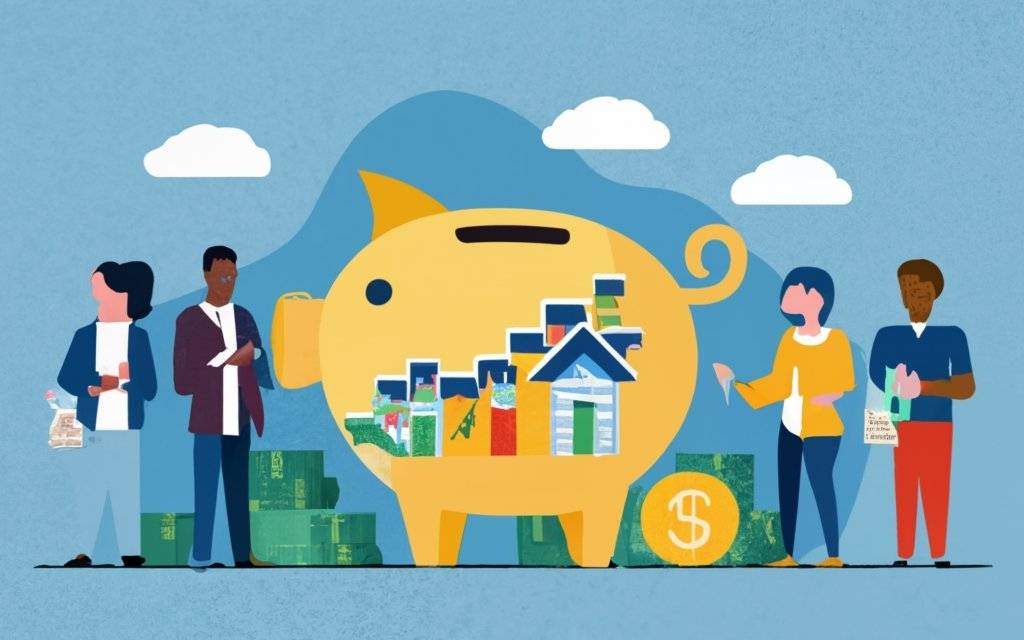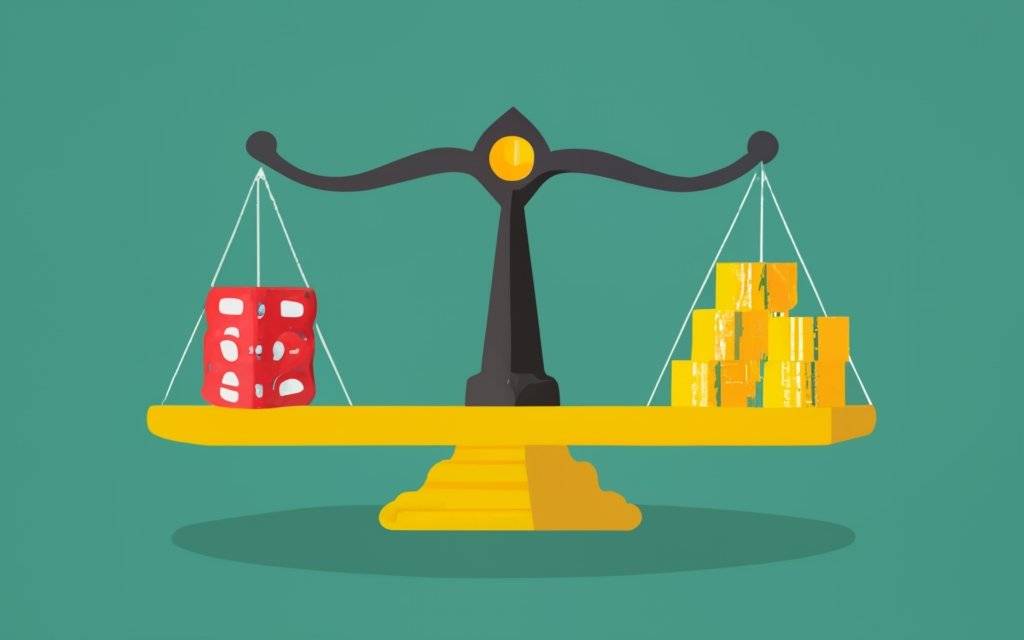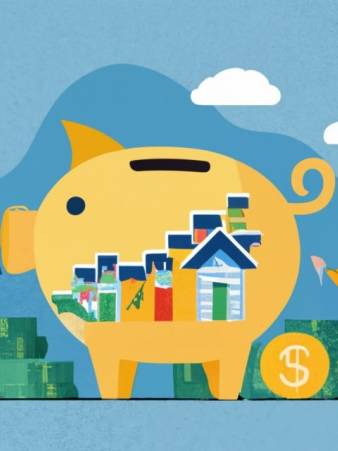Ever felt like the stock market's a maze? You're not alone. Let's cut through the confusion together. In this guide, you'll uncover the essentials of investing, explore various investment types, and learn how to balance risk with potential rewards. We're building your know-how to craft a portfolio that suits your goals. With simple steps and clear insights, you'll navigate the market's ups and downs like a pro. Ready to take control of your financial future? Let's dive in.
Key Takeaways
- Investment goals are important and serve as destinations on a financial journey.
- Understanding basic investment terms and concepts is crucial for making informed decisions.
- Different types of investments, such as stocks, bonds, mutual funds, and real estate, come with their own risks and rewards.
- Risk tolerance and return objectives play a role in determining suitable investments, and diversification and asset allocation are key strategies for building an investment portfolio.
Understanding Investment Basics

While you're starting out, it's crucial to grasp the fundamental principles that underpin the world of investing. Think of investment goals like destinations on a map. Just as you wouldn't start a road trip without knowing where you're going, you shouldn't start investing without a clear idea of what you want to achieve. Do you want to grow your money for a future purchase, save for retirement, or generate income?
Getting savvy with your financial literacy is like learning to read that map. It's about understanding how money works and making it work for you. You'll need to get the hang of some basic terms and concepts, like stocks, bonds, and interest rates. Don't worry, you don't have to be a math whiz. It's more about being comfortable with the basics so you can make informed decisions.
Exploring Types of Investments

As you delve into your investment journey, it's essential to understand the different vehicles that can carry your money toward its intended goals. There's a whole menu of options, and picking the right one can feel like choosing the best ice cream flavor on a hot day – exciting but a tad overwhelming.
Here's a quick scoop on some of the types you'll come across:
- Stocks: You're buying a slice of a company. If they do well, you could too, but remember, market timing is tricky. Don't try to beat the game; it's about long-term gains.
- Bonds: Think of them as loans you give out. They pay you back with interest. It's usually slower, but steadier.
- Mutual Funds: These are baskets of investments. Someone manages them for you, picking a mix of stocks and bonds.
- Real Estate: You're the landlord or the owner. Properties can earn you rent and might increase in value.
Each type comes with its own flavor of risks and rewards. For example, stocks may offer tasty dividend yields but can also be more volatile.
Now that you've got a taste, let's blend this knowledge into understanding how to balance the sweet with the sour by assessing risk and return in the next section.
Assessing Risk and Return

You've explored various investment types; now it's time to weigh their potential risks against the returns they may offer. Understanding this balance is key to meeting your return objectives while staying comfortable with your risk tolerance.
| Investment Type | Risk vs. Return |
|---|---|
| Savings Account | Low risk, low return |
| Bonds | Low to moderate risk, moderate return |
| Stocks | High risk, high return |
| Mutual Funds | Varies, based on composition |
| Real Estate | Moderate risk, potential for high return |
Risk tolerance is how much uncertainty in investment value you're okay with. If you're a bit nervous about losing money, you might prefer a savings account or bonds. They're safer, but they usually grow slower. On the flip side, if you're okay with ups and downs and aim for more money over time, stocks or real estate might be your jam.
Your return objectives are about how much you want your investments to grow. Everyone loves making money, but how much do you need to reach your goals? That'll help decide which investments are right for you. Just remember, high returns often come with higher risks. Make sure you're comfy with that trade-off before diving in!
Building an Investment Portfolio

Once you've nailed down your risk tolerance and return objectives, it's time to construct your investment portfolio with a strategic blend of assets. You're not just throwing darts at a board; you're making thoughtful choices to grow your money over time.
Here's what you should keep in mind:
- Investment diversification: It's like not putting all your eggs in one basket. Spread your investments across different types, such as stocks, bonds, and perhaps real estate, to manage risk.
- Asset allocation: Decide how much to put in each asset class. If you're a risk-taker, you might lean more towards stocks. If you're more cautious, bonds could be your thing.
- Regular contributions: Keep adding to your portfolio. Even small, regular investments can snowball over time thanks to compounding interest.
- Portfolio rebalancing: Life's a balancing act, and so is your portfolio. Adjust it periodically to stay aligned with your goals. If one investment soars, you may sell some of it to buy more of another to maintain your desired asset mix.
Navigating the Market Cycle

Understanding market cycles is crucial, as they'll affect how and when you'll want to adjust your investment strategy. Think of the market as a big, spinning wheel. Sometimes it's up, and everyone's happy, buying more and more. That's when market emotions are buzzing with optimism. But what goes up must come down. The wheel turns, and suddenly folks are selling, feeling not-so-great. That's the pessimism part.
Now, you might wonder, "When's the right time to jump in or out?" That's cycle timing, and it's like trying to hit a moving target while blindfolded. Experts spend years learning how to time the market, and even they don't get it right all the time. So, what should you do?
Keep it simple. Don't try to time the market perfectly. Instead, think about long-term goals. Are you saving for a house, retirement, or your kid's college? Stick to your plan, and don't let those wild market emotions shake you. Remember, it's not just about when you get in, but also how long you stay in. Over time, the ups and downs can smooth out, and that's where you might see growth.
Frequently Asked Questions
How Do Tax Implications Affect My Investment Decisions and Returns?
Taxes can eat into your profits, so you'll want to consider tax deductions and capital gains. They'll affect your returns, so it's smart to plan your investments with taxes in mind.
What Role Does Behavioral Finance Play in Investment Strategies?
Behavioral finance shapes how you perceive risk and influences your investment choices. Your emotional biases can lead to hasty decisions, so it's key to stay level-headed and avoid getting swayed by short-term market emotions.
How Can I Ethically Invest and Ensure My Money Aligns With My Values?
You can invest ethically by choosing Socially Responsible Funds or diving into Impact Investing, ensuring your money does good and reflects your values. It's a smart way to make a difference!
What Are the Implications of Technological Advancements, Like Blockchain and Cryptocurrencies, on Traditional Investing?
You're surfing the digital wave where blockchain and cryptocurrencies are reshaping investing. This digital disruption signals a market evolution, changing how you'll grow your money in this brave new financial world.
How Do Geopolitical Events and Global Economic Policies Impact My Personal Investment Strategy?
Geopolitical events and global policies can shake up markets, causing volatility. You'll see stocks swing and currency values change. It's key to adapt your investment strategy to stay ahead of these shifts.
Conclusion
You've dipped your toes in the investment pool, and it's not as daunting as you thought, right? Like a gardener planting seeds, you're all set to grow your wealth. Remember, balance risk with return, mix up your assets, and ride the market waves. Keep learning, stay patient, and your financial garden will flourish. Investing's a journey—enjoy the ride, watch your portfolio bloom, and pat yourself on the back. You've got this!




0 Comments: